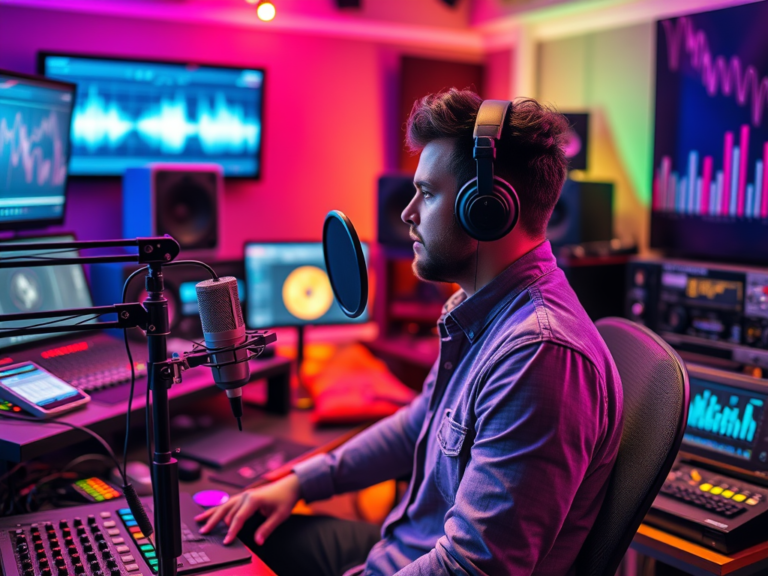New artists often use auto-tune, compression, and reverb in their tracks for various reasons, including artistic preference, technical needs, and industry trends. Here’s a detailed explanation of why these tools are heavily utilized:
1. Auto-Tune
Auto-tune is widely used to correct pitch and create stylistic effects.
Why Artists Use It:
1. Pitch Correction
• New artists may not have perfect vocal control or access to high-budget recording setups with vocal coaches, so auto-tune helps polish their performance.
• Even established singers use it for subtle corrections that save time during recording.
2. Modern Aesthetic
• Since T-Pain popularized auto-tune as a creative tool, many genres (pop, hip-hop, EDM) use it as a stylistic element to give vocals a robotic or ethereal quality.
• Artists like Travis Scott and Lil Nas X use it as part of their signature sound.
3. Consistency Across Takes
• Auto-tune ensures consistency, especially for artists recording in home studios without professional gear or producers.
4. Trend Following
• Younger artists often emulate popular musicians, and the overuse of auto-tune has become a hallmark of many modern hits.
2. Compression
Compression helps balance dynamics and keep vocals or instruments consistent in volume.
Why Artists Use It:
1. Dynamic Control
• Many new artists may not have precise vocal control, leading to inconsistent loudness. Compression smooths out these variations to make tracks sound professional.
2. Modern Music Loudness Standards
• Compression is essential for meeting the loudness standards of streaming platforms. Over-compressed tracks ensure that every element of the mix is audible on smaller speakers, like earbuds or phones.
3. Polishing Home Studio Recordings
• New artists often record in untreated environments with fluctuating mic levels. Compression compensates for these imperfections.
4. Punchy and Polished Sound
• Over-compression can create an in-your-face vocal or beat, which is trendy in pop, hip-hop, and EDM.
3. Reverb
Reverb adds depth and spatial quality to vocals and instruments.
Why Artists Use It:
1. To Create Atmosphere
• Reverb can make vocals sound dreamy, distant, or larger-than-life, which is a common aesthetic in genres like pop, R&B, and electronic music.
2. To Mask Imperfections
• Reverb can hide pitch issues or uneven vocal performance by blending the voice into the mix.
3. Home Studio Limitations
• Many new artists record in small or untreated spaces that lack natural acoustics. Adding reverb simulates professional studio ambiance.
4. Trend and Genre Influence
• Certain genres (e.g., pop, ambient, trap) rely heavily on reverb for their signature sound. New artists often mimic these trends to stay relevant.
Overuse and Challenges
1. Lack of Experience
• New artists or producers may overuse these tools due to inexperience, not knowing how to achieve a more balanced mix. They may think “more” equals “better.”
2. Home Studio Dependence
• Without professional engineers, artists often rely on plugins to compensate for recording flaws, which can result in over-processing.
3. Desire for a “Radio-Ready” Sound
• Many believe excessive auto-tune, compression, and reverb create a polished, “radio-ready” sound, even if it detracts from authenticity.
4. Cultural and Aesthetic Trends
• Current pop and hip-hop landscapes lean toward a highly processed sound, encouraging new artists to conform to industry norms.
Balance is Key
While these tools are valuable, overuse can result in a lifeless or artificial sound. As new artists gain experience, they typically learn how to use these effects more subtly and effectively, emphasizing their artistic vision rather than relying on technology.

